
-
Find the right food for your pet
Take this quiz to see which food may be the best for your furry friend.
Find the right food for your pet
Take this quiz to see which food may be the best for your furry friend.
Featured products
 Adult Perfect Weight & Joint Support Chicken Recipe Dry Dog Food
Adult Perfect Weight & Joint Support Chicken Recipe Dry Dog FoodThis weight management and mobility support dog food was created with Hill’s unique understanding of the biology of overweight dogs.
Shop Now Adult 7+ No Corn, Wheat, Soy Chicken & Brown Rice Dog Food
Adult 7+ No Corn, Wheat, Soy Chicken & Brown Rice Dog FoodSupports energy level and beautiful coat in mature dogs
Shop Now Adult 7+ Perfect Digestion Chicken, Whole Oats & Brown Rice Recipe Dog Food
Adult 7+ Perfect Digestion Chicken, Whole Oats & Brown Rice Recipe Dog FoodScience Diet's breakthrough nutrition supports ultimate digestive well-being & healthy microbiome for dogs age 7+
Shop NowFeatured products
 Perfect Weight Salmon & Vegetable Canned Cat Food
Perfect Weight Salmon & Vegetable Canned Cat FoodOver 70% of cats lost weight within 10 weeks when fed this nutrition
Shop Now Adult Savory Chicken Entrée Cat Food
Adult Savory Chicken Entrée Cat FoodPrecisely balanced nutrition with the delicious taste of savory minced chicken to help fuel the energy needs of cats during the prime of their life
Shop Now Adult Perfect Digestion Chicken, Barley & Whole Oats Recipe Cat Food
Adult Perfect Digestion Chicken, Barley & Whole Oats Recipe Cat FoodScience Diet's breakthrough nutrition supports ultimate digestive well-being & healthy microbiome
Shop Now -
Dog
- Dog Tips & Articles
-
Health Category
- Weight
- Food & Environmental Sensitivities
- Urinary
- Digestive
- Joint
- Kidney
-
Life Stage
- Puppy Nutrition
- Adult Nutrition
- Senior Nutrition
Cat
- Cat Tips & Articles
-
Health Category
- Weight
- Skin & Food Sensitivities
- Urinary
- Digestive
- Kidney
-
Life Stage
- Kitten Nutrition
- Adult Nutrition
Featured articles
 Pet Food Storage Tips
Pet Food Storage TipsDiscover how and where to store your dry, as well as canned, dog and cat food. Learn how to find the "best before" dates on all Hill's pet food packaging.
Read More Water
WaterDiscover why water is the most important nutrient for your dog or cat to live a healthy life. Find out how much water your pet should consume each day.
Read More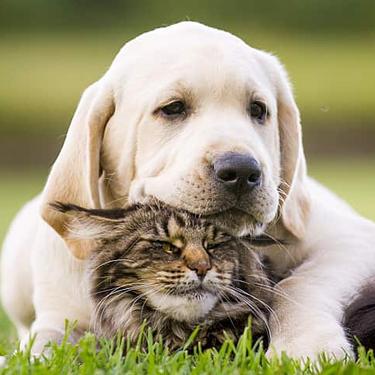 The Incredible Science Behind Your Pet's Microbiome
The Incredible Science Behind Your Pet's MicrobiomeLearn what a pet's microbiome is, how it contributes to your pet's gut & overall health, and why nutrition is important in maintaining healthy microbiomes.
Read More -
Find the right food for your pet
Find the right food for your pet


As a cat parent, it's hard not to think of your kitty as a baby, even when they're well into their golden years. Because many cats retain their youthful behavior well into adulthood, it makes you wonder, when are cats full-grown adults and at what age are cats full-grown? Age and breed play a large part in when a kitten becomes a cat.
When Are Cats Full-Grown?
One day, you have a tiny kitten running around your house, and before you know it, they're a big cat. It may seem like they grow overnight, but cats actually go through five life stages, as explained by the American Association of Feline Practitioners and American Animal Hospital Association life stage guidelines. One way to determine when your cat is full-grown is to see into which category they fall into:
- Kitten (birth to six months)
- Junior (six months to two years)
- Prime (three to six years)
- Mature (seven to 10 years)
- Senior and geriatric (11 years and up)
Much like their human counterparts, the development stages of kittens are counted in weeks and months up until the age of two. At what age are cats full-grown? At about one year old. Cats reach adulthood in the junior stage moving into prime stage. You can think of this as your cat being in their late teens and 20s, young adults full of energy and verve.
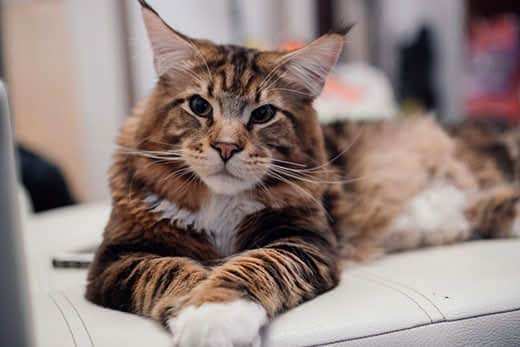
Once your cat ages into adulthood, your veterinarian can help you determine your cat's ideal weight and recommend a meal plan to help optimize their health. You can work together to modify this plan as your cat moves into each new life stage. It's important to schedule this visit so that these baselines can be established, allowing you to keep an eye on your cat's wellness as they age.


Tasty Tips
How Do Gender and Breed Affect a Cat's Size?
Once your cat is officially a grown-up, they reach their full size. A cat's size is determined by their genetics: The average house cat weighs between six and 12 pounds and is about 18 inches long and 10 inches tall. A cat's weight may fluctuate as they age, but physical traits such as size, as well as eye color, body length, coat pattern and texture, are fully developed by the age of two. Generally speaking, male cats are larger than female cats in height, length and weight. This is common among mammals, reports Science Daily, and researchers chalk it up to natural selection.
Depending on their breed, some cats are smaller or larger than average once they're full-grown. The Merck Veterinary Manual notes that "only 5 to 10 pounds separate the smallest and largest domestic breeds of cats," but when you're talking about small creatures like the house cat, that's a big difference. There are many cat breeds throughout the world. The International Cat Association recognizes 71 pedigree breeds as well as mixed breeds — each of which comes with its own size determinations.
Keep in mind that the weight of average cats is determined based on cats of a healthy weight and body condition score. Overweight or underweight cats may differ from these averages, so it is always good to speak to your veterinarian about what a healthy weight should be for your particular kitty to ensure they remain as healthy as possible.
Pedigree and Mixed-Breed Cats
If your cat is a pedigree breed, you have a better sense of what their full size will be, points out the Cornell Feline Health Center at Cornell University, but with a mixed breed, it's difficult to know for sure. If you adopt a certified pedigree breed like the Maine Coon, for instance, you know you're getting a large furry friend — male Maine Coons can weigh up to 25 pounds and measure up to 40 inches long! On the flip side, the smallest cat breed, the Singapura, weighs at the most eight pounds and only measures around eight inches tall and 12 inches long. Not only is the Singapura smaller, but they also reach adulthood later, around two years of age.
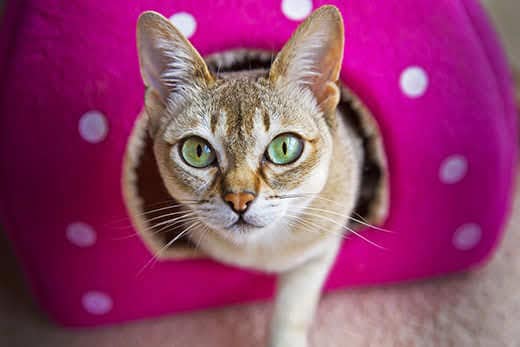
Mixed breed cats are a wonderful amalgamation of multiple breeds that create a unique cat, and you never know what you're going to get! It's fun to see what dominant traits your mixed-breed kitty acquires as they grow into an adult.
If you've raised your cat from a kitten or the junior stage of life, you have a pretty good idea of their temperament and social-emotional needs. You also know their favorite napping spot and favorite toy. As your furry friend grows up, you also want to ensure that they have a well-balanced, nutritious meal plan that's formulated for their age range, so they get the vitamins and nutrients they need.


Christine O'Brien is a writer, mom, and long-time cat parent whose two Russian Blues rule the house. Her work also appears in Care.com, What to Expect, and Fit Pregnancy, where she writes about pets, pregnancy, and family life. Find and follow her on Instagram and Twitter @brovelliobrien.
Related products

Science Diet's breakthrough nutrition supports ultimate digestive well-being & healthy microbiome

Precisely balanced nutrition with the delicious taste of savory minced chicken to help fuel the energy needs of cats during the prime of their life

Feline Adult Perfect Weight Variety Pack

Over 70% of cats lost weight within 10 weeks when fed this nutrition
Related articles
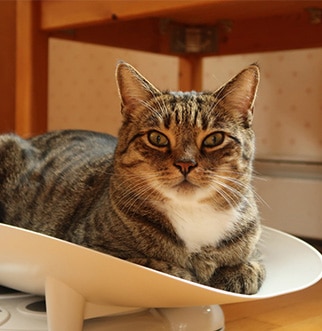
How do you get a cat to lose weight? Learn all about cat foods for weight loss, including how to choose weight control cat food and exercise tips.
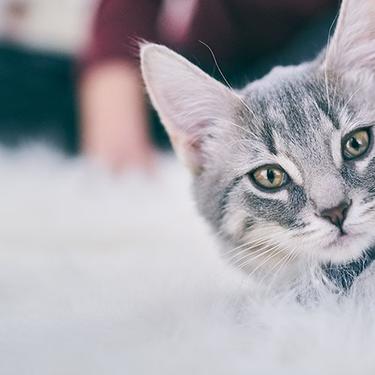
Discover the benefits of Hill's line of kitten foods and how they provide complete and balance nutrition for growing kittens.
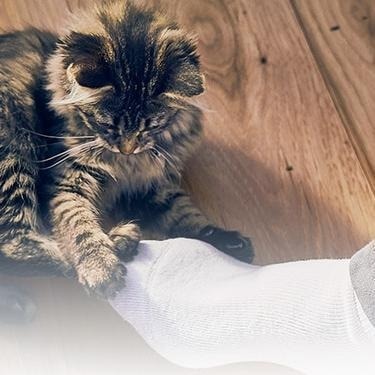
Discover which cat toys games your feline friend might like, and how they are great sources of exercise. Explore our library of articles to learn more.
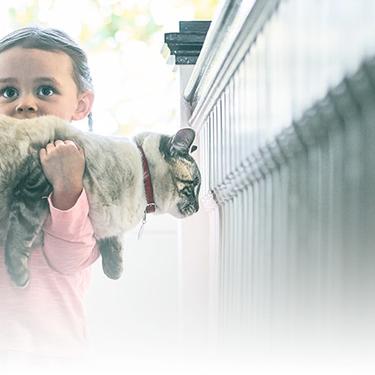
Discover how to identify cat sensitive skin and what you can do to help your cat thrive from head to paw.

Put your cat on a diet without them knowing
Our low calorie formula helps you control your cat's weight. It's packed with high-quality protein for building lean muscles, and made with purposeful ingredients for a flavorful, nutritious meal. Clinically proven antioxidants, Vitamin C+E, help promote a healthy immune system.
Put your cat on a diet without them knowing
Our low calorie formula helps you control your cat's weight. It's packed with high-quality protein for building lean muscles, and made with purposeful ingredients for a flavorful, nutritious meal. Clinically proven antioxidants, Vitamin C+E, help promote a healthy immune system.

